Teachers know that vocabulary is an important part of reading and language comprehension but teaching vocabulary can be a challenge. One tool that teachers can use to increase student vocabulary is word matrix activities. This post will go into more detail about what word matrixes (matrices) are, activities you can do with them, and free teaching posters to help you get started with word matrix activities in your 4th and 5th grade classroom!
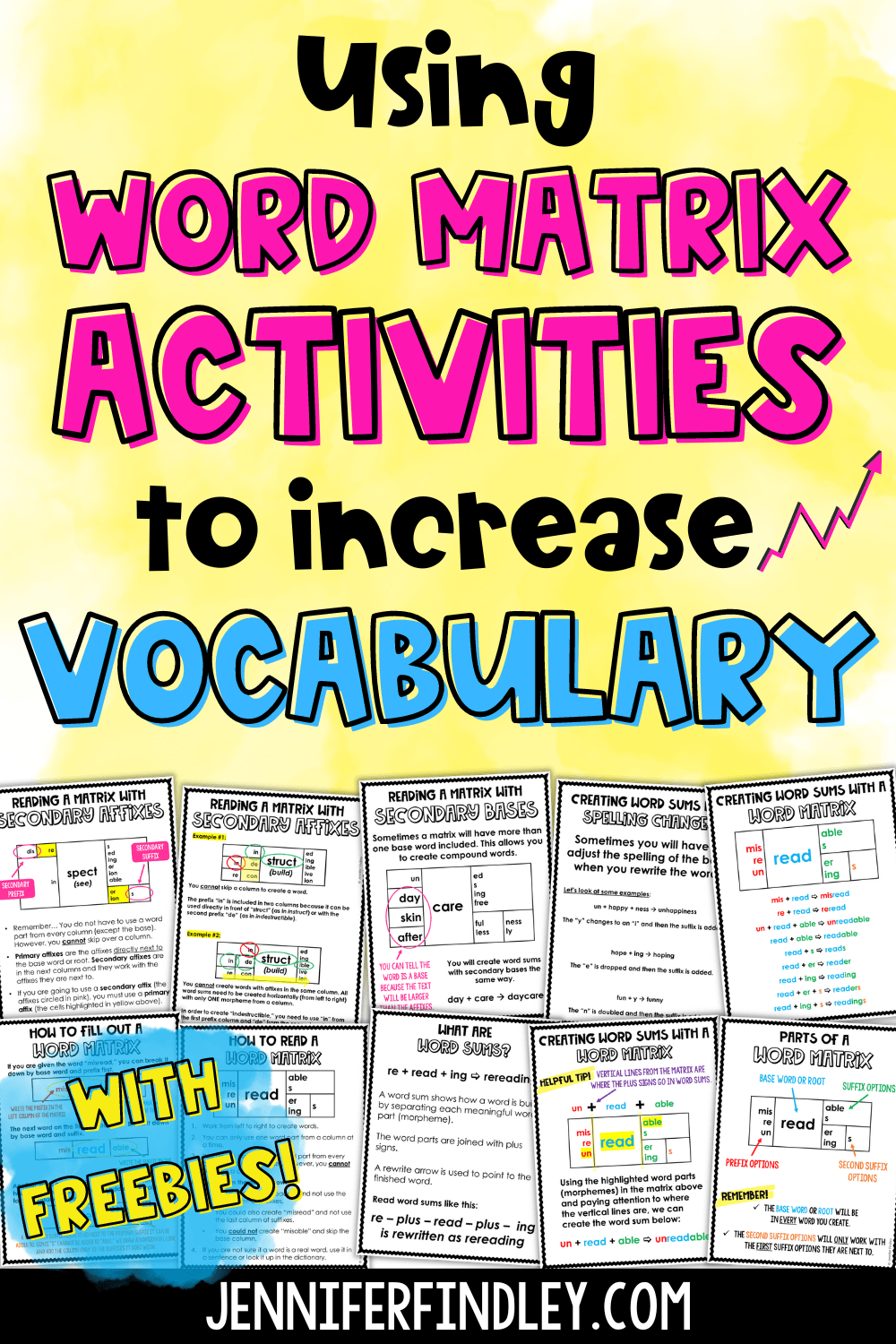
What Are Word Matrixes/Matrices?
A word matrix shows written morphemes (affixes, roots, and bases) that can be combined to construct words. Students use a word matrix to create known words and new words that use a common base or root and a group of affixes.
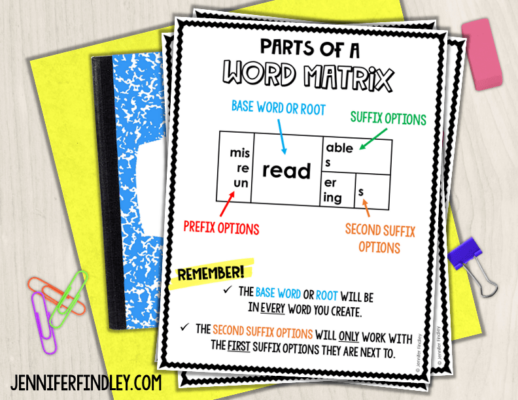
A word matrix is designed with prefixes on the left, a base or root in the center column, and suffixes on the right. All of the words that are constructed from the matrix must contain the base word/root that is shown in the center of the matrix.
A matrix rarely represents all of the words that can be built from a given base or root. This allows you to customize it to your needs. The matrixes you use with your students can be as simple or as complex as your students are able to handle.
A matrix may also include one or more secondary base elements. This allows students to create compound words from the matrix.
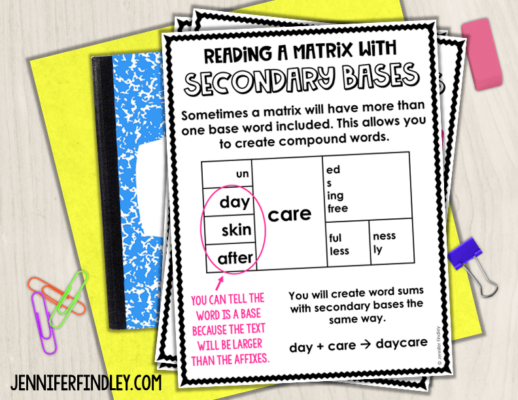
Matrixes may also include secondary prefixes and suffixes. Examples: dis + re + spect + ful and in + spect + or + s. These allow students to create words with multiple prefixes and suffixes.
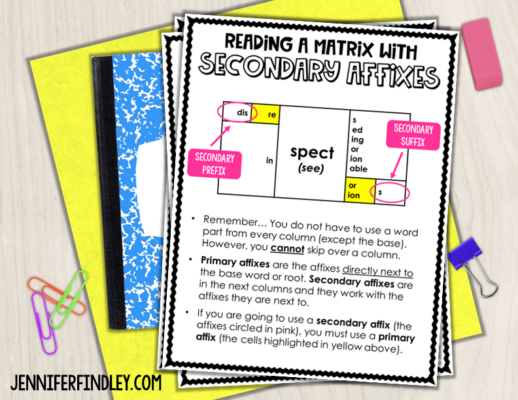
Get the Free Posters for Getting Started with Word Matrix Activities HERE
Why Use Word Matrixes
Using word matrix activities is beneficial for many reasons. Here are a few:
- They increase students’ understanding of affixes and how they influence base words and roots that they’re added to.
- They support understanding of parts of speech and how words are used in sentences, which support an understanding of syntax.
- They increase students’ vocabulary by allowing them to see the connection between known words/affixes and new words that they create or encounter in their reading.
- They increase students’ understanding of root words when you are introducing new roots. Students are able to see how those roots are used in lots of different words depending on the addition of prefixes and suffixes.
- Word matrixes are great for reviewing the spelling conventions with suffixes, such as doubling the base word, dropping the E, and changing the y to an i.
Introducing a Word Matrix
When you first introduce word matrix activities to your students, you want to keep it simple and easy.
Start with a familiar base word (care, help, teach, etc.) and one that does not require spelling changes of the base when suffixes are added. You can also control the affixes that you present on the matrix. Make sure and use affixes that students are familiar with when first introducing matrixes.
Here are some possible steps to introducing a completed word matrix to students:
1. Explain how the matrix is set up. Discuss the columns and the morphemes that are organized in each column. Tell students that prefixes are in the first column, a base or root in the middle column, and suffixes in the last column.
2. Discuss the base and its meaning. Explain that the base will be used in every word that the students create.
3. Read the prefixes and discuss their meanings. Model how to use a prefix from the matrix with the base to create a word. Discuss the new meaning of the word. If using word sums, show how the word is constructed. (Example: mis + spell → misspell)
4. Read the suffixes and discuss their meanings. You could also discuss parts of speech with the suffixes. Model how to use a suffix from the matrix with the base to create a word. Discuss the new meaning of the word and any parts of speech changes. If using word sums, show how the word is constructed. (Example: spell + er → speller)
5. Model how to create words using prefixes + bases + suffixes. Discuss meaning and parts of speech changes. If using word sums, show how the word is constructed. (Example: mis + spell + ing → misspelling)
6. After modeling, have students create additional words using the matrix. Record the words they create (and the word sums). Continue to discuss the meaning or parts of speech changes.
7. When finished creating words, encourage students to choose one word to use in a sentence (either written or verbally with a partner).
*For matrixes with roots, the only difference is that you may need to model pronunciation and spend more time discussing the meaning.
Here are some other things your students will need to know and understand to be word matrix masters (all of these are included in the free printables available near the end of the post):
- How to read a matrix
- What word sums are and how to read them/write them
- How spelling conventions affect the rewritten word (from a word sum)
- How to use secondary prefixes (re + con + struct) and suffixes (help + ful + ness)
- How to use secondary base elements to create compound words (day + care, after + care)
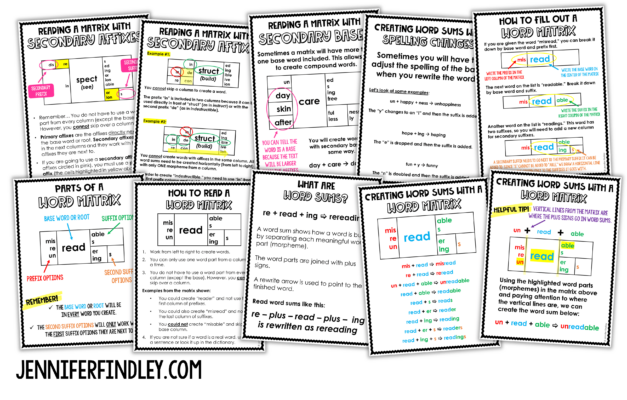
Different Activities Using a Word Matrix
Once students know how a matrix works, there are several activities you can use:
1. Start with a completed matrix and have students create word sums and words
2. Give a list of word sums and an empty matrix. Have students write the words and complete the matrix.
3. Give students a list of words and an empty matrix. Have students write the word sums and complete the matrix.
4. Give students an empty matrix with only the base/root filled in. Have them complete the matrix while writing word sums and words. This is a more advanced activity, but many teachers prefer this when working with matrixes directly with students.
Extension Activities After Completing a Word Matrix
The power of the matrix activities is in the discussion and application, or use of the words created. After you have completed a word matrix with students or studied a completed one, there is so much more than can be done with the words created.
Here are some ideas:
1. Have students choose words to use in sentences. They can do this in writing or verbally with a partner. They could even try using several words from the matrix in a short story.
2. Assign specific words to use in sentences. Have students share their unique sentences with partners, small groups, or the whole class. Discuss the usage of the word.
3. Have students choose words to write the meaning of each morpheme and then the meaning of the word. They can use a dictionary to check their definition/tweak it.
4. Sort the words created by part of speech.
5. Have students choose a word created and write 5 more words that use the same prefix or suffix.
6. Choose two words and have students compare and contrast them. They could discuss parts of speech, meaning, and use of specific affixes.
7. Have students choose a word and write a synonym and/or antonym for the word.
8. Sort all or a selection of the words by spelling conventions. Students could sort the created words by if a spelling change was made to the base or not. Example: hopeful (no spelling change to the base), hoping (spelling change to the base), and hopelessness (no spelling change to the base).
Get the Free Posters for Getting Started with Word Matrix Activities HERE
Want Ready-to-Use Word Matrix Activities?
If you want completed word matrix activities to use with your 4th and 5th grade students, check out this resource that includes 30+ completed matrixes (bases and roots) in multiple versions to fit your needs!
More Morphology Blog Posts and Resources
Free Prefixes, Suffixes, and Roots Posters
Using a Morphology Wall in Grades 4-5
Teaching Morphology in Grades 4-5
Morphology Word Chains with Freebies
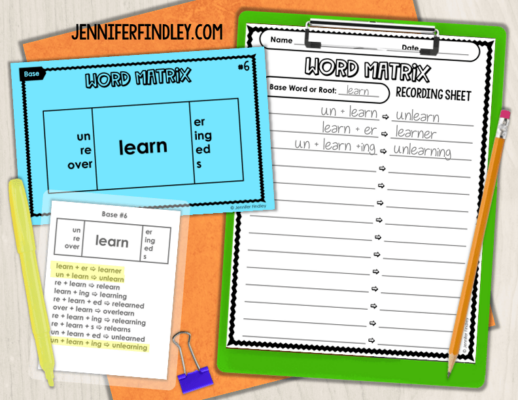
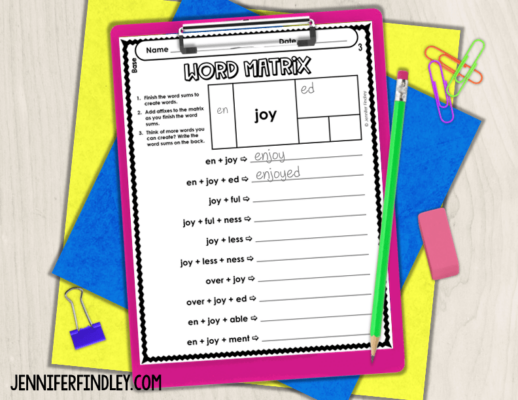
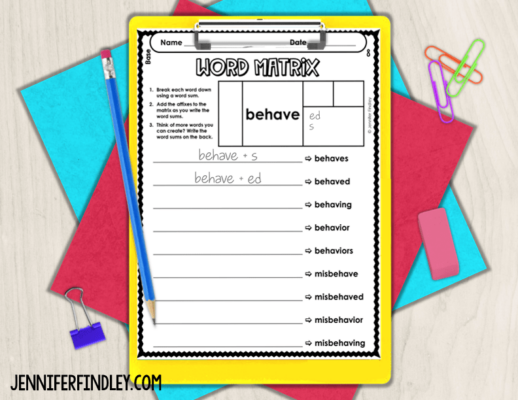
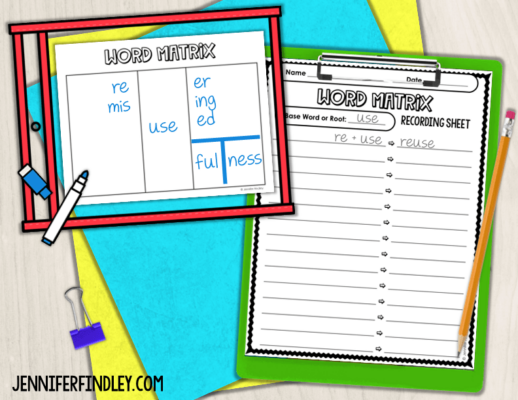
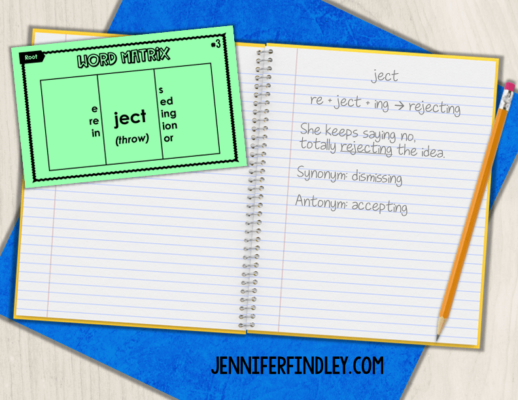
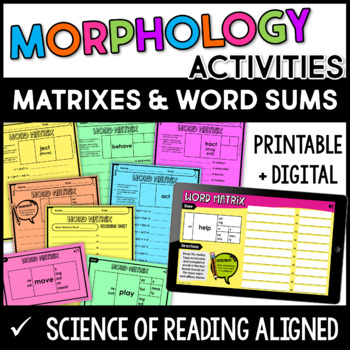







love!this!
Thank you so much for this information! I would love to start using this with my 6th grade students. I am just trying to figure out how to fit it in. Do you recommend doing one activity a week with possible follow up activities? Any tips would be appreciated.
I purchased the Morphology Activities on TPT, but my district blocks TPT and I can’t get my bundle; TPT is blocked.
Is there a way you could send it to my email if I provide it to you?
Thanks:)
Hi, can you send an email to jen @ jenniferfindley.com (no spaces) with proof of purchase? We will get it sent right over.
I love the idea of the word matrix, and would like to access the free word matrix activities. However, when I click on the area that says get the word matrix activities HERE, there is no link. Would it be possible to email the link?
Hi! Under that heading (Get the Free Posters for Getting Started with Word Matrix Activities HERE), there is a form for you to enter your email in. If you scan the post and look for that heading, you should see it. If you still don’t reach out to jen @ jenniferfindley.com (no spaces).